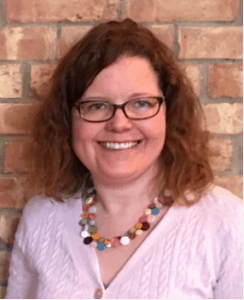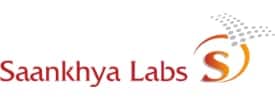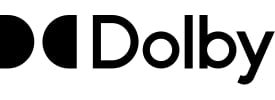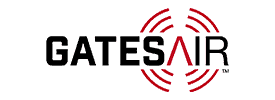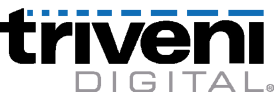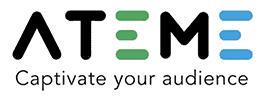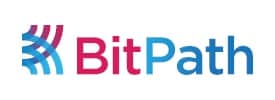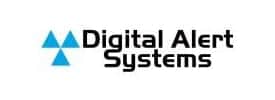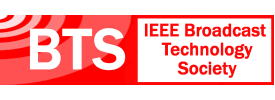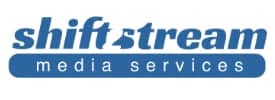- About
- Members
- Sponsors
- Subcommittees
- Technical Documents
- News
- Events
- Spotlight ATSC 3.0
- Contact Us
- Member Login
- Member Meetings
- Advanced Search
Search Site
Member Links
- About
- Members
- Sponsors
- Subcommittees
- Technical Documents
- News
- Events
- Spotlight ATSC 3.0
- Contact Us
- Member Login
- Member Meetings
- Advanced Search
First Dozen Certified as SBE ATSC 3.0 Specialists
Posted on June 8, 2021 in ATSC News
2021 NAB Show First to Offer On-Site ATSC 3.0 Exam
The Society of Broadcast Engineers’ new certification program has garnered its first group of ATSC 3.0 Specialists, with a dozen people now officially certified by SBE. The new level of certification was developed by the Society of Broadcast Engineers Certification Committee, chaired by Ralph Hogan, CPBE, DRB, CBNE, with the assistance of ATSC.
In addition to various certification levels that require a certain time of professional career experience and cover a broad knowledge base, the SBE offers a number of Specialist Certifications, each one focusing on a specific understanding of a technology such as 8-VSB, AM Directional, and Digital Radio Broadcast specialists – and now certification as an ATSC 3.0 engineer.
PBS Wisconsin broadcast engineer Vicki Way Kipp, one of the first two ATSC 3.0 Certified engineers, focuses her work on making video accessible with best practices closed captioning and on being familiar with audio description. In the past, she worked on Digital TV datacasting at the network operations center that feeds the Wisconsin statewide transmitter network. When the opportunity to earn SBE ATSC 3.0 Certification opened, Kipp stepped forward.
“I hope that I’m in a better position to recognize potential ATSC 3.0 opportunities and to think ahead about equipment purchases needed for production of native ATSC 3.0 content. I expect that ATSC 3.0’s nascent new applications will enable broadcast engineers from the studio to master control to the transmitter to offer more services and better reception to our viewers. I’ve been clipping ATSC 3.0 articles from trade magazines for the past few years to learn about ATSC 3.0. But I needed external motivation like the SBE’s certification and its accompanying deadline to commit myself to learning the overall ATSC 3.0 system,” Kipp says.
During the upcoming NAB Show in Las Vegas in October, SBE will be offering the ATSC 3.0
Specialist Certification exam. For the past several years, SBE has offered certification testing at the NAB Show. Applicants can pick the certification test (or tests) they want to take, and they must register in advance with SBE to do so. Certifications are offered to both SBE members and non-members alike, although the registration fee is higher for non-members.
To apply for a specialist certification, an individual must currently hold certification on the Broadcast Engineer, Senior Broadcast Engineer, Professional Broadcast Engineer or Broadcast Networking Engineer Certification level.
SBE’s Certification Committee worked with several SBE members with direct experience installing ATSC 3.0 systems to develop the program. A set of questions was created, beta tests were conducted, the questions were reviewed and adjusted, and additional beta testing was held. The final question pool covers a mix of practical application and technology standards. Like all SBE Certifications, the exam questions will continue an ongoing review process to ensure the information being covered is relevant and current. Certifications are valid for five years, and then must be renewed or advanced to a higher level.
Exams must be completed within three hours and consist of 50 multiple-choice questions (two points each) and one essay question (20 points maximum). Exams are pass/fail, and a score of 84 is a passing grade.
The first group of engineers earning the ATSC 3.0 certification includes Dennis Baldridge, Fred Baumgartner, Mark Fehlig, Doug Garlinger, Ted Hand, Ralph Hogan, Victoria Kipp, Wayne Pecena, RJ Russell, Dave Siegler, Joe Snelson, and Merrill Weiss.
Wisconin’s Kipp says she started several weeks before the exam to get ready. “I blocked off several nights a week and weekends for preparing for this exam. I watched the SBE’s six ATSC 3.0 Modules and three ATSC 3.0 Networking Modules, read the NextGenTV Host Station Manual, watched Pearl TV webinars by Dave Folsom, and browsed the ATSC 3.0 standards. For an additional perspective, I read the ATSC 3.0 Transition and Implementation Guide from Meintel, Sgrignoli, and Wallace.
In her day-to-date work, Kipp says that the Certification may come in handy because “I get to assist viewers who have an issue with closed caption reception and other accessibility needs. Ever since the ATSC 1.0 transition, viewers contact us because CEA-608 or CEA-708 closed captions are occasionally missing, and the viewer’s display only decodes one of the caption standards — not both — so they don’t receive closed captions. ATSC 3.0’s IMSC 1.0 closed captions will contain tunneled caption data for CEA-608 and 708 closed captions. It will become important to verify the presence of legacy caption signals being present, as well as captions upconverted to IMSC 1.0 or produced natively as IMSC 1.0. In addition, ATSC 3.0’s enhanced dialogue support may supplant closed captions for some viewers.
Charlotte, NC engineer Ted Hand was also one of the first two engineers certified. As Director of Engineering/Operations at WSOC-TV, Hand has more than four decades of experience as a television engineer. He is working on an ATSC 3.0 host station project this month.
“Our Station group is going toward ATSC 3.0. I want to be the lead engineer for the group. The best way to learn how it works is to study for the Certification test. I had digital copies of the ATSC standards and the Pearl TV Host Station Manual with me for the test, which is allowed. These two references are excellent for studying for the test,” Hand explains.
And now that he’s certified, what does Hand hope to do with the certification?
“I want to teach others and have a better understanding of the format and system of the ATSC 3.0 interworking. The certification will be useful for my day-to-day work because it will show that I have working knowledge of ATSC 3.0. Between the certification and the ATSC standards, I have all the information needed to maintain and expand the working environment.”
Posted in ATSC News
News Categories
News Archives
Subscribe
Subscribe to The Standard, our monthly newsletter. Learn More
Join ATSC
ATSC is a membership organization with both voting and observer categories. Voting members include corporations, nonprofit organizations, and government entities, and they participate actively in the work of ATSC. Observers are individuals or entities not eligible to be a voting member.
Subscribe to our Newsletter
Subscribe to The Standard, our monthly newsletter, to stay up-to-date with ATSC news and events around the world.
Site Links
Contact Us
Advanced Television Systems Committee, Inc.
1300 I Street NW, Suite 400E
Washington, DC 20005
Do you have questions about ATSC?
About ATSC
The Advanced Television Systems Committee, Inc., is an international, non-profit organization developing voluntary standards and recommended practices for digital terrestrial broadcasting. ATSC member organizations represent the broadcast, broadcast equipment, motion picture, consumer electronics, computer, cable, satellite, and semiconductor industries. ATSC also develops digital terrestrial broadcasting implementation strategies and supports educational activities on ATSC standards.
© 2025 ATSC


